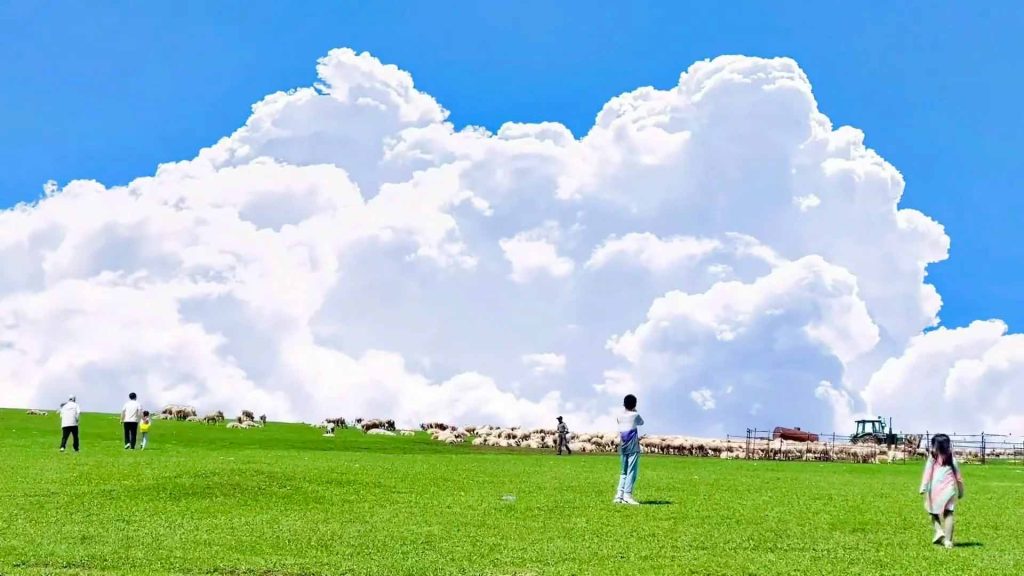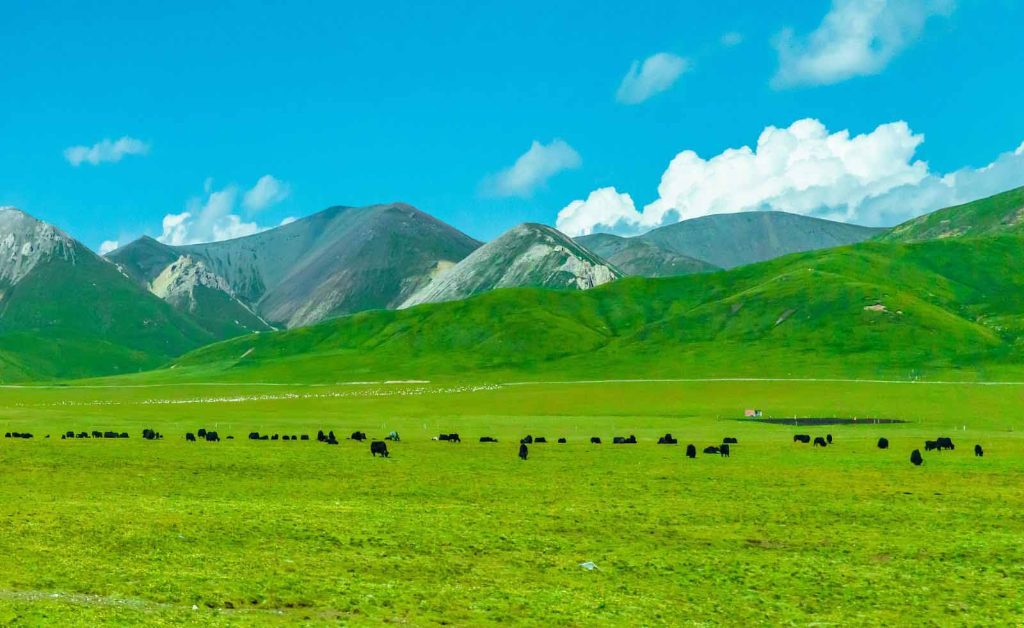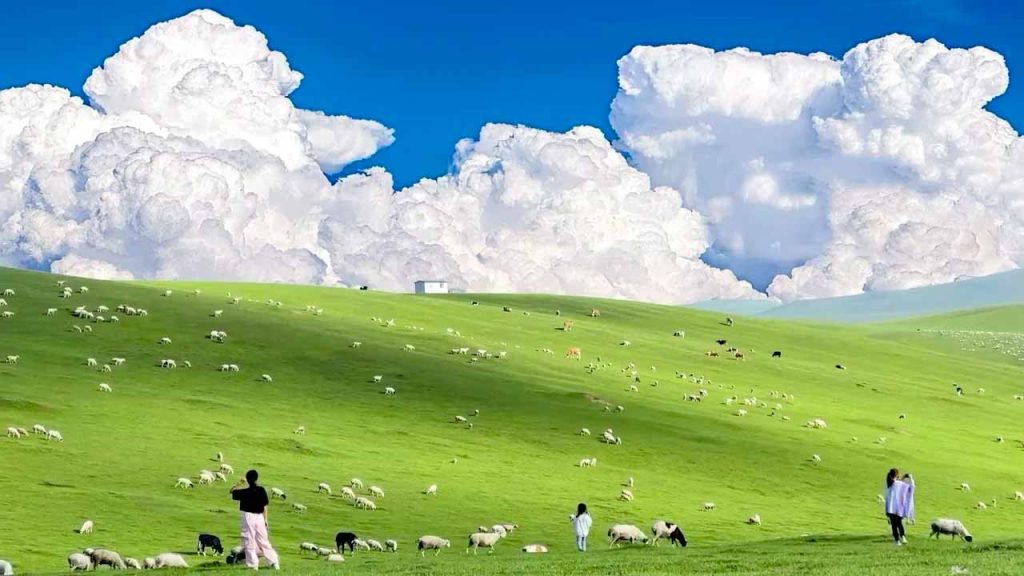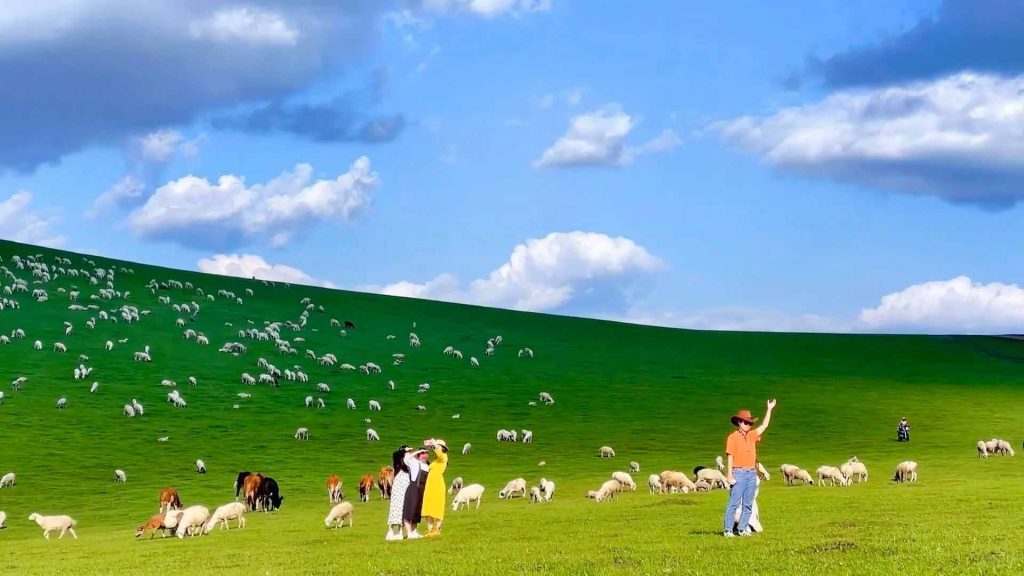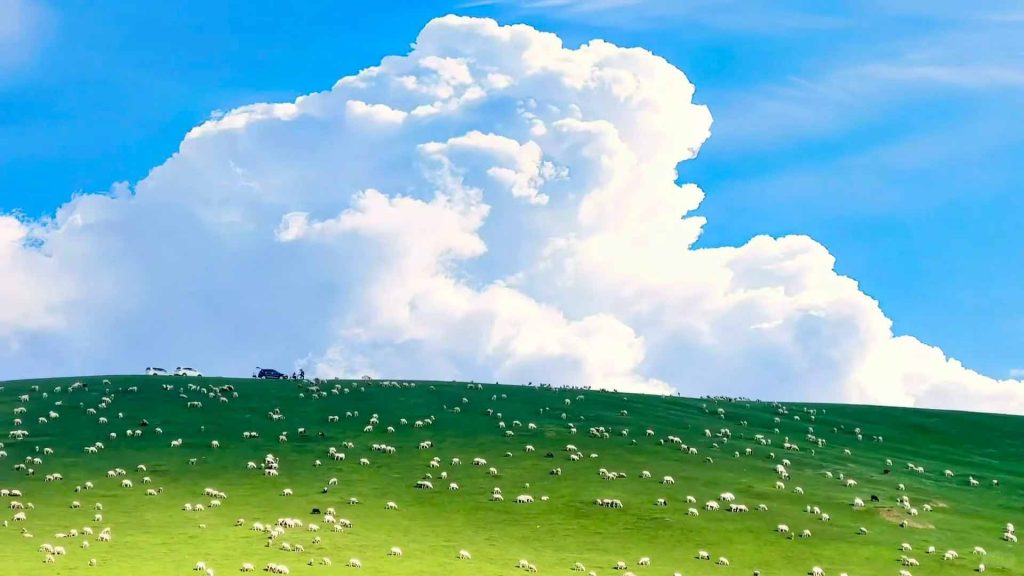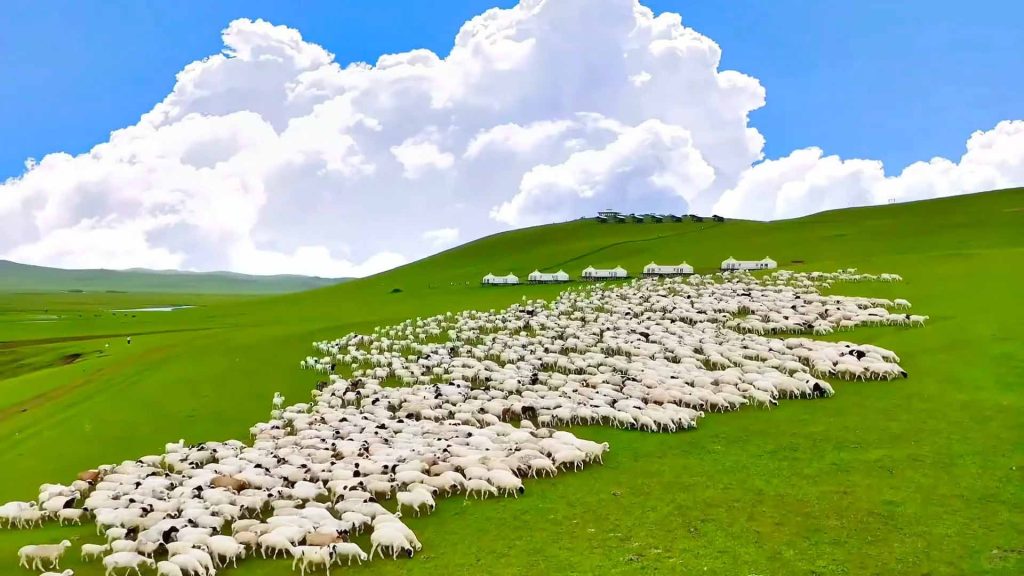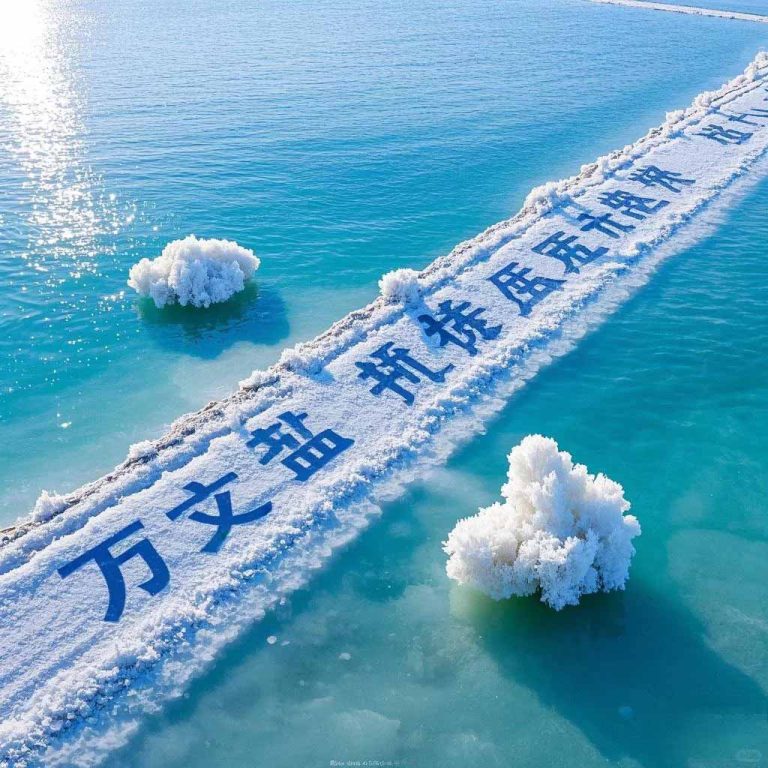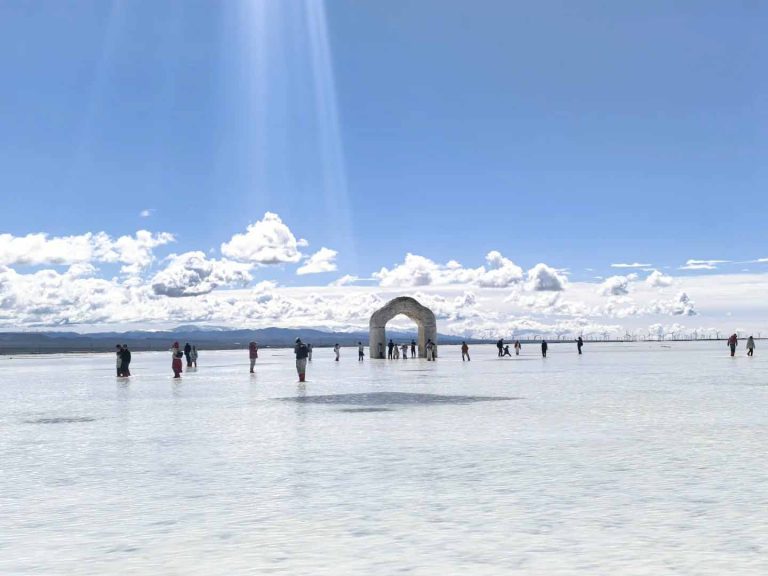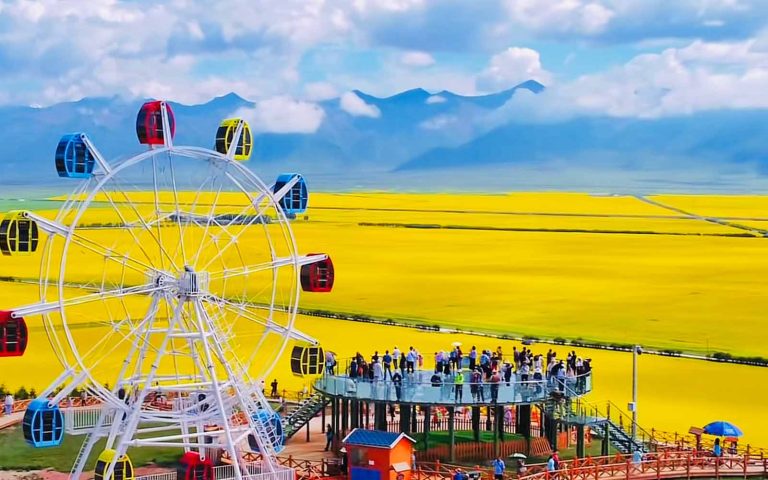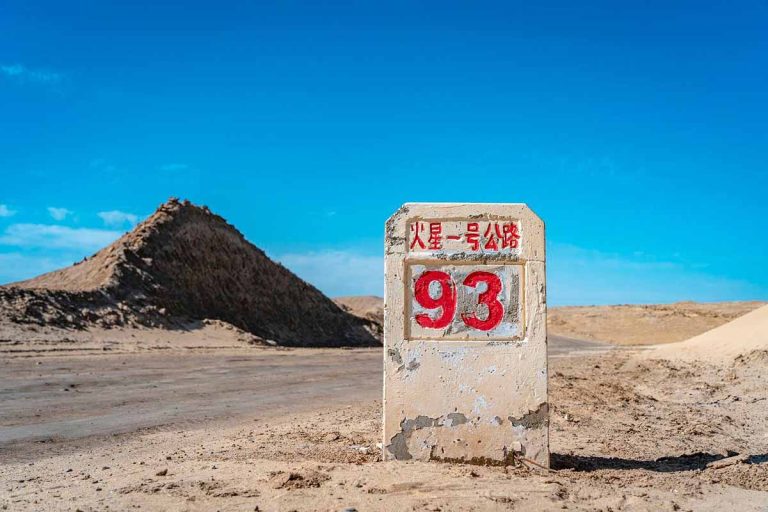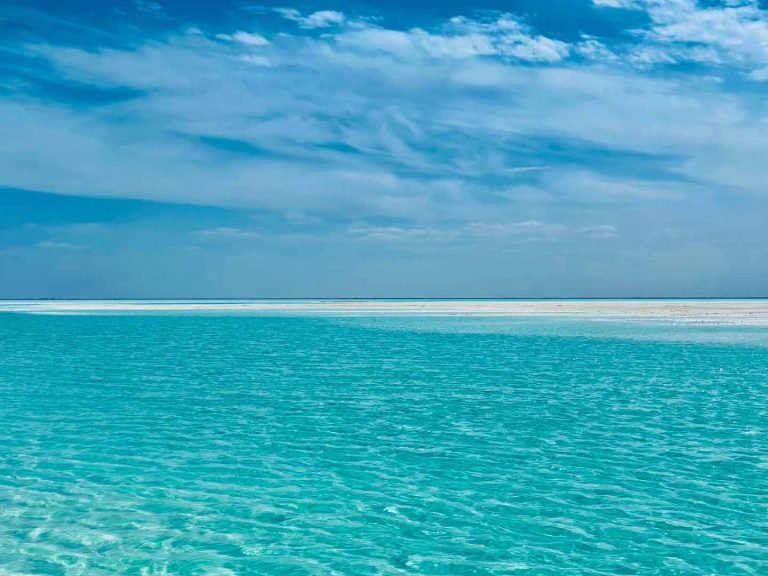address
250 meters south of Dreamland Qilian Nomadic Experience Base, Ebao Town, Qilian County, Haibei Tibetan Autonomous Prefecture, Qinghai Province
Opening hours
Open all day throughout the year
In the area of Ganqing Junction on the northeast edge of the Qinghai-Tibet Plateau, there is a great mountain range called the “Heavenly Mountain” by the Xiongnu people-Qilian Mountain. The Qilian grassland in the hinterland of the mountain range, with its blend of “snow-capped mountains as the bone, forests as the vein, and grasslands as the muscle”, was ranked among the “Six Most Beautiful Grasslands in China” selected by National Geographic of China in 2005. This is not only the ecological barrier of the Hexi Corridor, but also a living sample of the symbiosis between nomadic civilization and nature. Every inch of meadow carries the gift of “Father Mountain” and the precipitation of years.
1. Core overview: The wonders of the grassland nurtured by the plateau wet island
The Qilian Mountain grassland is not a single grassland landscape, but a composite natural landscape covering nine types of grassland ecosystems, from the temperate grassland at an altitude of 2,300 meters to the alpine cushion-like vegetation zone at an altitude of 4,500 meters, forming a complete vertical ecological spectrum. This grassland, which spans the two provinces of Gansu and Qinghai, has a low average annual temperature and a short frost-free period. However, nourished by the meltwater of the Qilian Mountain glacier, it has become a “wet island” in the western desert, giving birth to natural pastures with high annual grass output and excellent grass quality.
As an important ecological hub, the grassland is home to rare beasts such as snow leopards, rock sheep, and white-lipped deer. Birds such as black-necked cranes and golden eagles breed here, and wetland plants such as fir leaf algae and Tianshan Baochun are dotted in the meantime, forming an ecological wonder intertwined with the “animal kingdom” and the “Plant treasure House”. Historically, it was a breeding ground for war horses in the Tang Dynasty, and now it still continues the nomadic tradition of “living by water and grass”, and the pastoral songs of the Yaozheer (Yugu) people still reverberate on the grassland.
2. Geographical location: the geographical backbone of Ganqing Junction
The Qilian Mountain grassland is distributed in the valleys, slopes and gentle slopes of the Qilian Mountain Range. The geographical coordinates are between 36°-39° north latitude and 94°-103° east longitude. The core area spans the counties of Supei, Sunan, Akse in Gansu Province and Tianjian and Qilian in Qinghai Province. The southern foot of the mountain belongs to the jurisdiction of Qinghai and is adjacent to the northern edge of the Qaidam Basin; the northern foot belongs to the territory of Gansu, closely following the Hexi Corridor, forming a unique pattern of “one mountain divides north and south, and the two regions share grassland”.
From the perspective of transportation location, the grassland is about a 4-5-hour drive from Xining and a 2.5-hour drive from Zhangye. The 227th most American Road passes through the territory, seamlessly connecting the Danxia landform with the grassland scenery, becoming the core node of the Northwest Ring Line. The main peak of the mountain range, Zegoujie, is 5,808 meters above sea level, and the snow-capped peaks stand like barriers all year round, outlining a majestic skyline for the grassland.
3. Transportation guide: multi-way arrival and convenient tour
(1) External arrival method
- Airplane travel:
- If you are heading from Qinghai, you can first fly to Xining Caojiabao International Airport. The airport is about 29 kilometers away from Xining City. There is an airport bus (21 yuan /person), a taxi (about 100 yuan) or an online taxi directly to the city. Then set off from Xining and travel to the Qilian Grassland by car, charter or long-distance bus.
- If you are traveling from Gansu, Zhangye Ganzhou Airport is a closer choice. The airport is about 24 kilometers away from Zhangye City. You can take an airport bus (15 yuan / person) or a taxi (about 50 yuan) to the city and then transfer to the grassland.
- Train / high-speed rail travel:
- Qinghai Direction: Xining Railway Station is an important transportation hub, with rich high-speed rail and ordinary trains. After arriving at Xining Railway Station, you can walk to Xining City Bus and Passenger Transportation Center, take a long-distance bus to Qilian County (about 5 hours, the fare is about 80 yuan, and there are multiple daily departures), and then take a taxi or charter a car to various attractions in the grassland after arriving in Qilian County.
- Gansu direction: Trains stop at Zhangye West Railway Station (high-speed rail Station) and Zhangye Railway Station (ordinary railway Station). From Zhangye City South Bus Station, there are shuttles to Sunan County or the surrounding towns of Qilian Mountain Grassland (about 3 hours, the fare is about 50 yuan). For some services, you need to inquire in advance for tickets.
- Travel by car:
- Departure from Xining, Qinghai: Follow the Beijing-Tibet Expressway to the Xizhang Line (G227), the whole journey is about 280 kilometers and takes 4-5 hours. Along the way, you will pass by Sun Moon Mountain, Qinghai Lake Erlangjian Scenic Area, etc., you can visit by the way.
- Departure from Zhangye, Gansu Province: Follow the Zhangwen Expressway (G0611) to the Xizhang Line (G227), the whole journey is about 150 kilometers, which takes 2.5-3 hours. The road conditions are good and suitable for families to drive by themselves. Some sections of the road can enjoy the unique landscape of Danxia and grassland transition.
- Note: Some sections of the G227 line may be closed due to snowfall and freezing in winter. You need to check the weather and road conditions in advance and prepare snow chains; in summer, some mountainous sections may have rockfalls, so you need to drive carefully.
- Charter a car / travel with a group:
- There are a large number of charter services in Xining or Zhangye city. The average daily cost of a 7-seater commercial vehicle is about 600-800 yuan (including driver service fees, excluding fuel and tolls), and the itinerary can be flexibly arranged, suitable for 3-6 people traveling together.
- Local travel agencies have 1-3-day group tours of Qilian Mountain grassland, including transportation, tickets, accommodation, etc., with a per capita cost ranging from 500-1500 yuan. It is suitable for tourists who do not want to plan by themselves. Some groups will also connect Zhangye Danxia, Menyuan rapeseed flower and other surrounding attractions.
(2) Internal tour transportation
- Scenic sightseeing car:
- In the Zhuoershan Scenic Area, you must take a sightseeing bus, 40 yuan /person, from the entrance of the scenic area to the top of the mountain viewing platform, with stops along the way, you can get off and take pictures, the whole journey is about 20 minutes.
- There are loop sightseeing buses in the core tourist area of Qilian Mountain Grassland (Qinghai Section), which are 30 yuan per person and can stop at multiple observation decks and folk experience points to facilitate tourists to easily explore.
- Charter / taxi:
- Qilian County City is a transportation transit point around the grassland. The starting price of a taxi in the county seat is about 6 yuan. For short-distance attractions such as Zhuo’er Mountain (about 10 kilometers) and Binggou Linhai (about 15 kilometers), the taxi fare is about 20-30 yuan; for Arouda Temple (about 25 kilometers), the taxi fare is about 20-30 yuan.The cost is about 50 yuan.
- If you plan to visit multiple attractions (such as from Zhuo’er Mountain to Damaying Grassland), it is recommended to charter a car. The average daily cost of a local car is about 300-400 yuan, which can flexibly control the tour time.
- Cycling / hiking:
- There are special cycling greenways in some areas of the grassland, such as the section from Zhuo’er Mountain to Binggou Linhai. Bicycles can be rented in Qilian County (20 yuan / hour for ordinary cars and 30 yuan / hour for mountain bikes). The scenery along the way is beautiful and suitable for tourists with good physical strength.
- Some attractions (such as the ice ditch forest Sea) have hiking plank roads, ranging in length from 1-3 kilometers, and the difficulty of hiking is low. You can deeply feel the ecological beauty of the blend of forest and grassland without additional transportation costs.
4. Tickets and open information: multiple options of tour plans
The Qilian Grassland is characterized by a ‘global landscape”. The core scenic spots coexist with the free secret realm, and the ticket policies are flexible and diverse.:
Comprehensive scenic area tickets: Tickets for the core tourist area of Qilian Mountain Grassland (Qilian County, Qinghai) are 60 yuan/person, and the opening hours are 9:00-18:00 from April 1st to October 30th. They are normally open on Saturdays and Sundays.
- Charges for featured attractions:
- Zhuoer Mountain Scenic Area: Tickets are 30 yuan / person, sightseeing cars are 40 yuan / person, and a total of 76 yuan can be climbed to the top to overlook the grassland and Danxia panoramic views.;
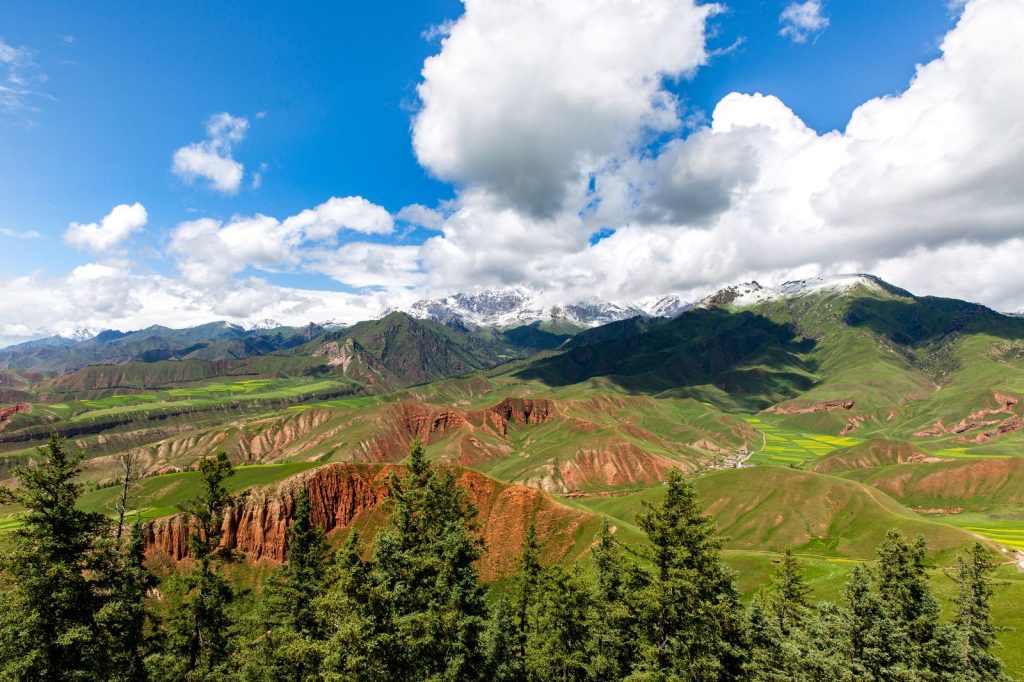
- A Rou Daji Temple: Gelug Sect Temple, tickets are 15 yuan/person, students, the elderly and other vouchers enjoy a half-price discount;
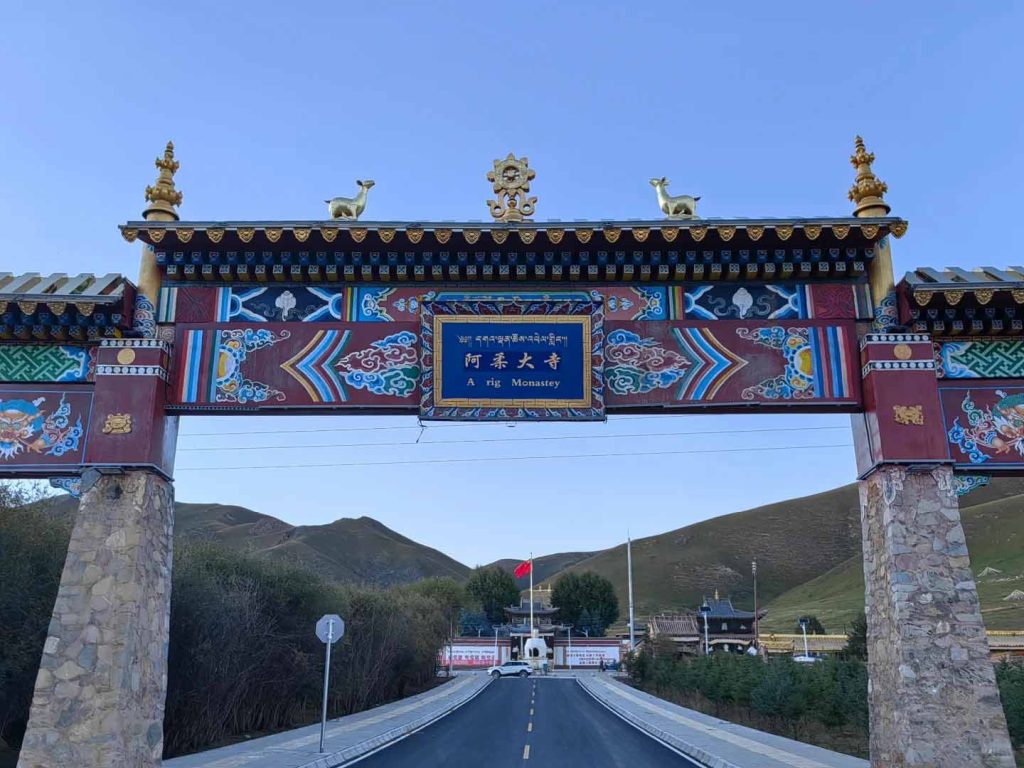
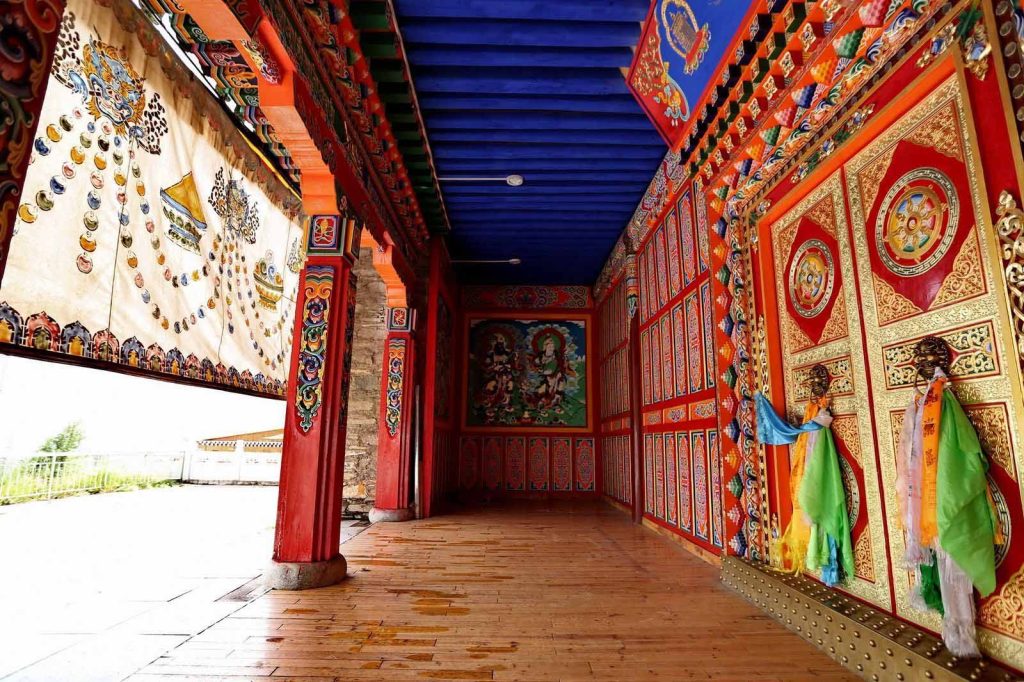
- Gangshka Snow Peak: The ferry is 25 yuan/person, which can reach Lianxin Lake at an altitude of 3,800 meters for viewing.
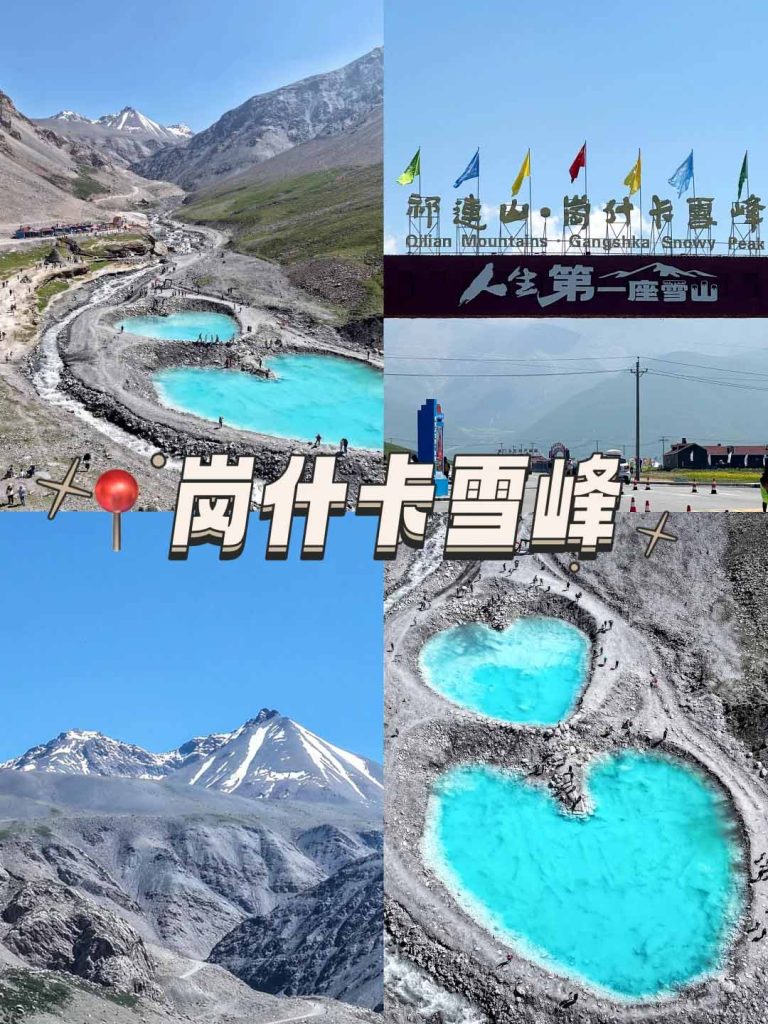
- Free landscape areas: Binggou Forest Sea, Zhuo’er Mountain Back Mountain, Ebao Ancient City Ruins Park and Huanhu West Road Grassland are all open for free, suitable for self-driving stops along the way to enjoy.
5. Must-visit attractions and featured experiences
(1) The core landscape punch-in place
- Damaying Grassland: The essence of the Qilian Mountain grassland is located between Qilian Mountain and Yanzhi Mountain. The terrain is open and flat, and the aquatic plants are plentiful. It has been a high-quality pasture since ancient times. In 2005, it was awarded the “Six Most Beautiful Grasslands in China” together with the Qilian Mountain Grassland. In summer, wildflowers are covered with brocade, cattle and sheep are scattered like pearls, and the snow-capped mountains in the distance are reflected in the streams, forming a classic grassland picture scroll.
- Zhuoer Mountain: Known as the ”Little Switzerland of the East“, the Danxia Mountain body and the green meadow collide with bright colors. Climbing to the top of the beacon Tower, you can face Niuxin Mountain, the ”God of the Mountains’. The grassland S bend at the corner of the plank road is an excellent opportunity for photography. When the sea of rapeseed flowers is in full bloom in July, the three colors of red, green and yellow are stacked side by side with the snow-capped mountains.
- Ice ditch forest sea: Snow-capped mountain meltwater passes through the forest, Qinghai spruce and Qilian round cypress form a primeval forest, and the wooden plank road runs through it, with rotting leaves on the ground, crisp birdsong, and extremely high negative oxygen ion content. It is like a summer retreat like “The Wizard of Oz”. Secret realm.
- Arouda Temple: A quiet ancient temple hidden deep in the grassland. The red walls, golden roofs and prayer flags are particularly eye-catching on the green grass. Precious Buddhist texts and works of art are preserved in the temple, which is suitable for meditation. Feel the beauty of the blend of religious culture and grassland.
(2) Immersive grassland experience
- Horse riding: Choose a regular horse team to experience horse riding, 50-80 yuan /hour, gallop in the meadow under the guidance of herdsmen, and feel the poetry of “the wind blows the grass and sees the cattle and sheep”.;
- Starry sky camping: The Tomao Tribal Ecological Camp provides grassland accommodation. At night, you can observe the Milky Way across the top of the snow-capped mountains with the naked eye. Wake up in idyllic songs in the early morning and experience nomadic life in an immersive way.;
- Cultural festivals: The Qilian Mountain Style Cultural Tourism Festival held in July, you can watch folk performances such as horse racing and pot village dance, and taste special delicacies;
- Photographystyle: Take the sunrise in the back mountains of Zhuo’er Mountain in the early morning, take dynamic blockbusters on the grassland highway in the afternoon, and go to the ancient city of Ebao in the evening to take the sunset over the ruins. There are highlights in all seasons.
6. Practical precautions: a safe and comfortable journey to the grassland
- Plateau adaptation guide: The average altitude of the grassland is above 3,000 meters. Those who are new to the grassland need to avoid strenuous exercise. Rhodiola rosea can be taken in advance. If you have symptoms such as headache and shortness of breath, you should rest and replenish water immediately. The medical facilities in Qilian County are well-equipped and you can seek medical attention in time.
- Clothing and protection skills: The daytime temperature in summer is 10-25℃, but it may fall below 10℃ in the morning and evening, and you need to prepare a jacket or thin down; the plateau has extremely strong ultraviolet rays, SPF50+ sunscreen, sunglasses, and ice sleeves are indispensable to avoid sunburn.
- Folklore and environmental protection guidelines: respect Tibetan and Mongolian customs, do not arbitrarily touch prayer flags and mani piles, and enter the monastery by turning clockwise and keeping quiet; grassland ecology is fragile, garbage needs to be carried with you, and vegetation should not be crushed at will, and wild animal products should be banned.
- Room, board and transportation recommendations: There are many accommodation options in Qilian County. The per capita cost of economical youth hostels is 60+, and the hotel is 200-300 yuan; Mujiale is 150 yuan per person, including food and lodging, and you can experience hand-caught lamb and yak yogurt. It is recommended to charter a car (400-600 yuan /day) or rent an SUV to drive by yourself. Cash is required for weak signals in some areas.
- The best time to travel: from July to August, the grassland is turquoise, the sea of flowers is in full bloom, and the temperature is cool; from September to October, the grassland is yellowing, forming a layered picture scroll with the snow-capped mountains. There are fewer tourists suitable for photography, so you need to keep warm.

